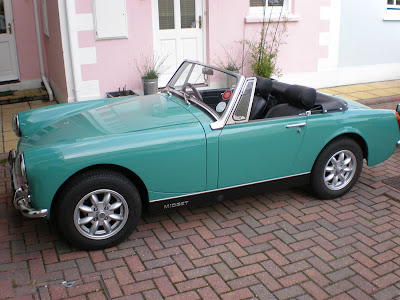The MG Midget in Today The End Part
The MG Midget in Today The End Part
The Spridgets are also popular in the U.S. and elsewhere for vintage racing. All Sprites and earlier model Midgets are powered by the very common A-Series engine which is very tunable for higher output.
Today, many MG Midgets are being restored helped by the availability of parts with many being re-manufactured. 'British Motor Heritage', which owns many of the original press tools, makes body panels and complete body shells. In the UK, among other suppliers, 'Moss Europe' and 'MG World UK' supply many other parts both new and used.
Today, many MG Midgets are being restored helped by the availability of parts with many being re-manufactured. 'British Motor Heritage', which owns many of the original press tools, makes body panels and complete body shells. In the UK, among other suppliers, 'Moss Europe' and 'MG World UK' supply many other parts both new and used.
















































